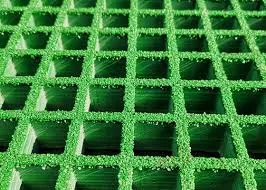
-
 Afrikaans
Afrikaans -
 Albanian
Albanian -
 Amharic
Amharic -
 Arabic
Arabic -
 Armenian
Armenian -
 Azerbaijani
Azerbaijani -
 Basque
Basque -
 Belarusian
Belarusian -
 Bengali
Bengali -
 Bosnian
Bosnian -
 Bulgarian
Bulgarian -
 Catalan
Catalan -
 Cebuano
Cebuano -
 China
China -
 China (Taiwan)
China (Taiwan) -
 Corsican
Corsican -
 Croatian
Croatian -
 Czech
Czech -
 Danish
Danish -
 Dutch
Dutch -
 English
English -
 Esperanto
Esperanto -
 Estonian
Estonian -
 Finnish
Finnish -
 French
French -
 Frisian
Frisian -
 Galician
Galician -
 Georgian
Georgian -
 German
German -
 Greek
Greek -
 Gujarati
Gujarati -
 Haitian Creole
Haitian Creole -
 hausa
hausa -
 hawaiian
hawaiian -
 Hebrew
Hebrew -
 Hindi
Hindi -
 Miao
Miao -
 Hungarian
Hungarian -
 Icelandic
Icelandic -
 igbo
igbo -
 Indonesian
Indonesian -
 irish
irish -
 Italian
Italian -
 Japanese
Japanese -
 Javanese
Javanese -
 Kannada
Kannada -
 kazakh
kazakh -
 Khmer
Khmer -
 Rwandese
Rwandese -
 Korean
Korean -
 Kurdish
Kurdish -
 Kyrgyz
Kyrgyz -
 Lao
Lao -
 Latin
Latin -
 Latvian
Latvian -
 Lithuanian
Lithuanian -
 Luxembourgish
Luxembourgish -
 Macedonian
Macedonian -
 Malgashi
Malgashi -
 Malay
Malay -
 Malayalam
Malayalam -
 Maltese
Maltese -
 Maori
Maori -
 Marathi
Marathi -
 Mongolian
Mongolian -
 Myanmar
Myanmar -
 Nepali
Nepali -
 Norwegian
Norwegian -
 Norwegian
Norwegian -
 Occitan
Occitan -
 Pashto
Pashto -
 Persian
Persian -
 Polish
Polish -
 Portuguese
Portuguese -
 Punjabi
Punjabi -
 Romanian
Romanian -
 Russian
Russian -
 Samoan
Samoan -
 Scottish Gaelic
Scottish Gaelic -
 Serbian
Serbian -
 Sesotho
Sesotho -
 Shona
Shona -
 Sindhi
Sindhi -
 Sinhala
Sinhala -
 Slovak
Slovak -
 Slovenian
Slovenian -
 Somali
Somali -
 Spanish
Spanish -
 Sundanese
Sundanese -
 Swahili
Swahili -
 Swedish
Swedish -
 Tagalog
Tagalog -
 Tajik
Tajik -
 Tamil
Tamil -
 Tatar
Tatar -
 Telugu
Telugu -
 Thai
Thai -
 Turkish
Turkish -
 Turkmen
Turkmen -
 Ukrainian
Ukrainian -
 Urdu
Urdu -
 Uighur
Uighur -
 Uzbek
Uzbek -
 Vietnamese
Vietnamese -
 Welsh
Welsh -
 Bantu
Bantu -
 Yiddish
Yiddish -
 Yoruba
Yoruba -
 Zulu
Zulu
frp desalination piping and fitting
The Importance of FRP Desalination Piping and Fitting in Water Treatment
In the quest for fresh water, desalination has emerged as a vital process, especially in arid regions and countries facing water scarcity. The efficiency of this process heavily relies on the materials used, particularly in the piping and fittings systems that facilitate the movement of seawater and brine. One of the most promising materials for this purpose is Fiber Reinforced Plastic (FRP), which has been gaining popularity due to its numerous advantages over traditional materials.
Advantages of FRP in Desalination Systems
FRP is a composite material made by combining a plastic resin with glass fibers, which significantly enhances its mechanical properties. This material is lightweight yet incredibly strong, making it an excellent choice for desalination piping systems where durability is crucial. The inherent corrosion resistance of FRP is another important advantage; it can withstand harsh marine environments and the corrosive nature of seawater, reducing the need for frequent replacements and repairs.
Moreover, FRP piping systems have lower energy costs associated with transportation and installation due to their lightweight nature. Compared to conventional materials like steel or concrete, FRP can be easily maneuvered and installed, leading to reduced labor costs and project timelines. Its flexibility also allows for a more straightforward installation in complex water treatment plant layouts, thereby optimizing the overall design of desalination facilities.
Customization and Design Flexibility
frp desalination piping and fitting

FRP fittings come in a variety of shapes, sizes, and configurations, which cater to the specific needs of desalination processes. This adaptability not only helps in achieving efficient layouts but also ensures seamless integration with various desalination technologies, such as reverse osmosis and multi-stage flash distillation. Furthermore, FRP can be manufactured to meet specific pressure ratings and dimensions, providing engineers with optimal solutions tailored to the unique challenges of each project.
The aesthetic aspect of FRP should not be overlooked either. Available in an array of colors and finishes, FRP components can be designed to match the visual identity of a facility or blend into the surrounding environment, which is beneficial for public-facing projects.
Environmental Benefits
As the global community strives for sustainability, the environmental advantages of using FRP in desalination systems become increasingly significant. The lightweight nature of FRP can lead to lower greenhouse gas emissions during transportation and installation. Additionally, longer-lasting systems reduce waste associated with repairs and replacements. Some FRP formulations are also designed to be recyclable, aligning with sustainable practices in construction and infrastructure development.
Conclusion
As water scarcity becomes an ever-growing concern worldwide, efficient desalination technologies are paramount to securing potable water. The use of FRP piping and fittings stands out as a forward-thinking solution that addresses many challenges faced in existing desalination systems. Its lightweight, corrosion-resistant properties, along with customization capabilities and environmental benefits, make FRP a strong candidate for future desalination projects. By investing in advanced materials like FRP, we can enhance the resiliency and efficiency of water treatment processes, ultimately contributing to a more sustainable future.









